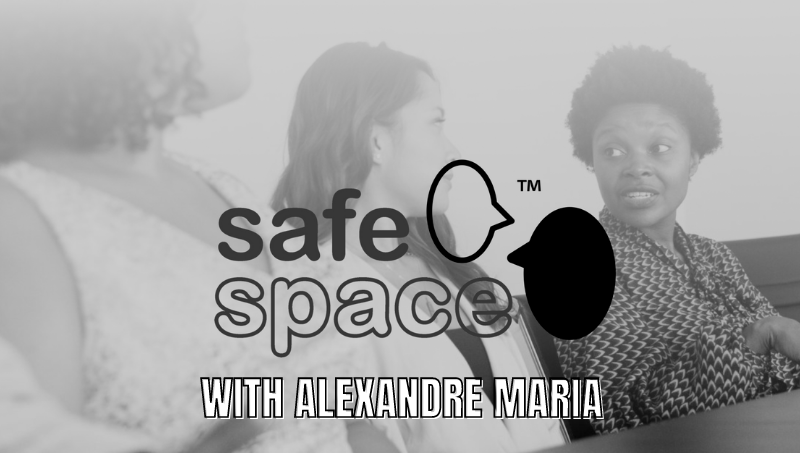“Let’s normalise conversations and engage senior leaders.”
Alexandre Maria [Managing Consultant, ED&I- The Clear Company]
At our Safe Space: How to do it Right Workshop event on Thursday 23rd June 2022, we had the pleasure of hosting Safe Space expert Alexandre Maria alongside over 500 registrees from 350 organisations.
Safe Space aims to provide a protected environment to enable brave conversations that are needed and may otherwise be avoided. The aim is to generate action-focused, meaningful and tailored outcomes, driven by the people they matter to. Co-created with our Race Equality Network and Mental Health First Aid England, Safe Space will help organisations achieve facilitated, meaningful dialogue between ethnic minority employees and their senior leaders/board members to make a commitment and take action to address some of the key issues raised. The emphasis of Safe Space is on action, not words.
Safe Space has been designed to:
- Enable brave conversations
- Facilitate uncomfortable discussions
- Drive meaningful change
Alexandre guided attendees through his own experience of establishing Safe Space. In his previous role at Inmarsat, Alex created their first multicultural employee network through leading a team of 7 volunteers and implemented Safe Space to drive lasting change. Reflecting on the impact of Safe Space, Alex told attendees: “The main difference was how it started to create awareness.”.
Using and adapting Race Equality Matter’s How to Guide, Alex stands as a success story for other organisations to follow. With over 90% of attendees left feeling that Alex’s insight was of use to their organisation and 9 out of 10 recommended this event to others, his conversation with Race Equality Matters’ co-founder, Javed Thomas, has been documented and recorded to support others in establishing Safe Space. As Javed informed attendees:
“I call it Safe Space plus. It’s not just the conversation, but what happens next.”
Why Safe Space?
With so many Equality, Diversity and Inclusion initiatives and charters available, knowing which one to choose for your organisation to tackle racial inequality can be challenging. A significant 66% of attendees felt that Safe Space would be more effective than other ED&I initiatives and Alex told us why he chose this solution:
“The number one reason was we wanted to amplify the voices of the Network members.”
Through using the Safe Space guide as a framework to follow, it gave the initiative more structure and both members and leadership greater confidence. Upon reflection of the “extremely valuable” guidance Safe Space granted the organisation, Alex also chose it because : “We also wanted our executive to be more aware of some of the challenges their colleagues might be going through day to day and at work.”
Safe Space can help organisations amplify the voices of ethnic minority employees, create awareness of their lived experiences, and offer structure through this process.
How can Safe Space be implemented well?
After attending the Safe Space workshop, two-thirds of attendees felt confident in implementing the solution within their organisation with over 50% planning to begin before 2023. Alex gave attendees crucial guidance that facilitated the successful implementation of Safe Space within his organisation:
- Alex considered buy-in from senior leadership as a “key step in the process” and he achieved this through creating a clear presentation directly aimed at allies on the board. This presentation outlined the aims of Safe Space and most importantly, “The key step was being very clear on why we are doing it, how we will deliver it and how it will be a safe environment.”.
- Choosing the right facilitator for Safe Space was also a big decision for Alex’s team, as they asked “Should we go external or internal?”. Whilst Alex opted for an internal network ally who had the skills and passion for the role, he told attendees to take time and consider the organisation’s needs when making this decision.
- Alex reminded us that all Safe Space attendees ought to be listened to and he did this through sharing and signing documents on the terms of reference and safety guidance. He also proposed the use of two separate meetings to grant separate time for listening to lived experience, followed by a meeting for discussion and next steps. “We used the session to answer questions and for ensuring everyone felt safe to participate and listen.”.
What is the impact of Safe Space?
Just a third of attendees feel their organisation tackles racial inequality well: this needs addressing. Alex provided his success story of implementing Safe Space to help change the tide on issues of race in the workplace and overcome barriers within organisations.
More than just Talk – Alex felt the follow-up meeting was a crucial means to ensure action was taken from the Safe Space.
“The impact was a list of actions that we agreed during the meeting and that we followed up in writing after the meeting.”, and these actions included: diversity at a senior level, diversifying the recruitment candidate pool, the CEO vocalising a statement on the zero-tolerance policy against discrimination, and better relationships with the Race Network. It also provided an opportunity to drive change through the organisation’s HR as the Network challenged the meeting, “Before we go into action, do we have any data?”
“This was a big step forward as it gave the HR team data on how people actually felt.”
Alexandre Maria’s successful work at implementing Safe Space in his former role is not a stand-alone example, as 80% of attendees felt Safe Space will help their organisation take meaningful action to create change.
Can your organisation be the next ‘success story’ in the drive towards racial equality?
Watch the full event recording and download the Safe Space guide on Race Equality Matters’ website to start your journey today.

